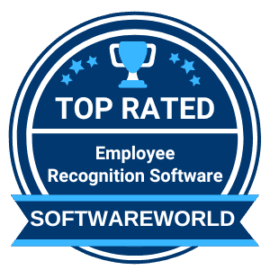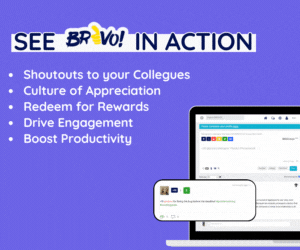
An inclusive workplace is the bedrock of triumph in today’s ever-evolving and electrifying business arena! Picture this: vibrant hubs where diversity, equity, and belonging reign supreme, honoring and applauding the remarkable contributions of every individual, no matter their background, identity, or viewpoint! Employees aren’t just valued in these empowering spaces—they’re cherished, respected, and encouraged to soar to new heights!
Imagine the buzz of camaraderie and collaboration pulsating, igniting innovation and creativity at every turn! Yes, embracing diversity isn’t just a game-changer—it’s a game-maker, infusing our organizational cultures with a kaleidoscope of perspectives and propelling us toward unparalleled success!
And guess what? This blog post isn’t just another read—it’s your roadmap to crafting your inclusive powerhouse! So, are you ready to dive into the exhilarating world of inclusive workplaces? Let’s buckle up and embark on this electrifying journey together!
Understanding Diversity and Inclusion
Delving deep into the intricate fabric of diversity and inclusion within the workplace unravels a captivating array of possibilities and benefits. Diversity, encompassing the rich tapestry of differences among individuals spanning race, ethnicity, gender, sexual orientation, age, religion, and socioeconomic background, lays the foundation for a vibrant and multifaceted organizational culture.
Meanwhile, inclusion catalyzes cultivating an environment where everyone feels esteemed, appreciated, and empowered to contribute their distinct perspectives and talents. Diversity and inclusion are the cornerstone of a flourishing workplace, nurturing innovation, creativity, and collaboration. An inclusive workforce not only mirrors the diverse mosaic of our global community but also reaps a plethora of rewards. It elevates employee engagement, morale, and productivity, with individuals thriving in an environment where they feel a profound sense of belonging.
Furthermore, diverse teams possess the strength to tackle intricate challenges and arrive at well-informed decisions, leveraging a broad spectrum of experiences and viewpoints. Nevertheless, numerous organizations encounter common barriers to achieving diversity and inclusion despite the evident advantages.
These hurdles may manifest as unconscious biases, a lack of leadership commitment, insufficient diversity training, or systemic inequities ingrained within the organizational framework. Overcoming these obstacles necessitates a united endeavor, commencing with heightened awareness and educational initiatives, followed by proactive measures to foster diversity and inclusion across all organizational echelons. By embracing diversity and nurturing an inclusive workplace ethos, organizations can unlock the boundless potential of their workforce, propelling them toward success in today’s diverse and dynamic business arena.
Building an Inclusive Workforce
Creating an inclusive workforce is paramount for fostering an organization’s harmonious and productive environment. Central to this endeavor are several pivotal strategies:
The recruitment and hiring process must be meticulously crafted to prioritize diversity. It means actively seeking out candidates from various backgrounds, cultures, and experiences to ensure that the workforce truly reflects the diverse society it serves. By embracing this approach, companies enrich their talent pool and foster innovation and creativity by integrating different perspectives.
At the heart of inclusivity lies the provision of equal opportunities. Regardless of race, gender, age, or any other characteristic, every employee should have an equitable chance to succeed. This entails establishing policies and practices that mitigate bias and discrimination, creating a level playing field where individuals are judged solely on their abilities and contributions, and reassuring the audience of fairness and confidence in the system.
Promoting diversity at all levels of the organization, from entry-level positions to leadership roles, ensures that voices from all backgrounds are heard and valued. This emphasis on diversity at all levels makes the audience feel valued and integral to the organization’s success. Comprehensive diversity training programs nurture a culture of understanding and respect.
These initiatives provide employees with the knowledge and tools to navigate diverse perspectives, challenge stereotypes, and foster empathy. By fostering an environment where differences are acknowledged and celebrated, organizations can create a sense of belonging where everyone feels valued and empowered to bring their authentic selves to work.
These strategies collectively lay the foundation for a workplace where diversity is not merely a buzzword but a lived reality, enriching the organizational culture and driving sustained success.
Read More: How an Employee of the Month Program Drives Employee Engagement?
Fostering a Culture of Belonging
Establishing a robust culture of belonging is not merely an option but necessary for organizations that foster a cohesive and supportive environment. At its core lies the commitment to creating open communication channels prioritizing active listening and engagement with all workforce members. This approach cultivates a space where ideas, feedback, and concerns can be freely expressed, fostering a sense of ownership and inclusion among employees.
Moreover, by promoting collaboration and teamwork, organizations facilitate the development of strong interpersonal relationships and a shared commitment to common goals. This sense of unity enhances productivity and strengthens the fabric of the organizational culture, fostering resilience and adaptability in the face of challenges.
Central to building this inclusive culture is recognizing and celebrating individual differences. Embracing diversity in all its forms, from cultural backgrounds to personal experiences, enriches the collective tapestry of perspectives within the organization. By acknowledging each member’s unique strengths and contributions, organizations create an environment where everyone feels valued and respected. It, in turn, empowers employees to bring their authentic selves to work, driving innovation, creativity, and, ultimately, collective success and fulfillment.
In essence, building a culture of belonging is a journey that requires ongoing commitment and effort, but the rewards for employee engagement, retention, and organizational performance are immeasurable.
Addressing Unconscious Bias
Addressing unconscious bias within organizations is a moral and strategic necessity for fostering a fair and inclusive workplace environment that thrives on diversity.
The journey toward combating unconscious bias begins with a foundational understanding of its definition and the profound impact it can have on decision-making processes and interpersonal dynamics. By acknowledging the existence of unconscious biases, individuals can proactively work to recognize and mitigate their effects. Implementing effective strategies to identify and address unconscious bias is paramount to promoting equity and diversity within the workplace.
It may encompass various approaches, including mindfulness training to enhance self-awareness, implementing structured decision-making processes to reduce evaluation bias, and fostering diverse team perspectives to encourage critical thinking and innovation.
Moreover, sustaining these efforts requires an ongoing commitment to education and awareness-raising initiatives. By continually engaging in learning opportunities and fostering open dialogue, organizations can create a culture that values diversity and actively works to challenge ingrained biases.
Ultimately, by prioritizing the cultivation of an inclusive environment where all individuals are valued and treated equitably, organizations can unlock the full potential of their workforce, leading to more significant innovation, collaboration, and overall success in achieving their goals.
Creating Inclusive Policies and Practices
Creating inclusive policies and practices fosters a workplace culture where everyone feels welcomed and empowered to contribute their best. This multifaceted effort necessitates the development of comprehensive policies and procedures that prioritize inclusivity and equity across all facets of organizational operations. By articulating clear guidelines promoting diversity and actively preventing discrimination, organizations lay the foundation for a culture of respect, acceptance, and mutual understanding.
Moreover, ensuring that reasonable accommodations are readily available for employees with diverse needs and abilities is essential to guaranteeing equal opportunities for success. This commitment to accessibility goes beyond mere compliance; it reflects a fundamental dedication to ensuring that all individuals, regardless of their background or circumstances, have equitable access to resources and opportunities within the organization. By proactively identifying and addressing barriers to inclusion and equity, organizations can create a supportive and welcoming environment where all employees feel valued and empowered to thrive.
This inclusive approach cultivates a sense of belonging among employees and enhances organizational performance, innovation, and overall success. Therefore, investing in inclusive policies and practices is not just a moral imperative but also a strategic one that positions organizations for sustained growth and excellence in the modern workforce.
Read More: 8 Elements of Culture at Workplace that You Need to Focus On
Empowering Employee Resource Groups
Empowering Employee Resource Groups (ERGs) represents a vital strategy for cultivating a workplace environment where diversity and inclusion are embraced, actively promoted, and celebrated.
Affinity groups or employee networks serve as crucial forums where individuals with shared identities, interests, or experiences can connect, support one another, and collectively advocate for organizational change. To truly harness ERGs’ potential, organizations need to provide robust support and empowerment mechanisms. This support entails furnishing ERGs with necessary resources, such as funding, meeting spaces, and technological infrastructure, to facilitate their activities effectively.
Moreover, offering leadership guidance and mentorship opportunities enables ERGs to develop strong organizational structures and strategic plans to achieve their goals. By recognizing the unique perspectives and contributions of ERGs, organizations can tap into their collective strength to drive impactful diversity and inclusion initiatives. ERGs function as catalysts for positive change, offering invaluable insights and perspectives that inform the development and implementation of policies, programs, and practices to foster a more equitable and inclusive workplace culture.
Actively engaging with ERGs and leveraging their expertise and passion allows organizations to foster an environment where all employees feel valued, respected, and empowered to bring their authentic selves to work. Ultimately, by nurturing and empowering ERGs, organizations can catalyze meaningful progress toward building a workplace culture where diversity is embraced and celebrated as a source of strength and innovation.
Promoting Leadership Accountability
Promoting leadership accountability is a cornerstone in fostering an inclusive workplace culture where everyone feels valued and respected. Leaders wield significant influence over the organizational climate within any organization, acting as role models and setting the standard for diversity and inclusion efforts.
Their commitment to these principles is symbolic and manifests through tangible actions and decisions prioritizing inclusivity at every turn. Leaders must establish specific diversity and inclusion goals to ensure that these ideals translate into concrete progress. These objectives serve as guiding benchmarks, signaling a clear commitment to embedding diversity and inclusion into organizational strategies and practices.
Moreover, holding leaders accountable for creating an inclusive culture requires more than rhetoric; it necessitates implementing robust accountability mechanisms and transparent evaluation processes. By setting clear expectations and regularly assessing progress, organizations can ensure that leaders actively contribute to creating an environment where diversity and inclusion thrive.
Ultimately, by promoting leadership accountability in diversity and inclusion, organizations can cultivate a culture where these principles are not merely buzzwords but integral components of the organizational DNA. It, in turn, fuels sustained success and growth as diverse perspectives and inclusive practices drive innovation, collaboration, and overall organizational excellence.
Measuring and Evaluating Progress
Measuring and evaluating progress in diversity and inclusion efforts represent fundamental pillars in fostering a truly inclusive workplace culture. Through tracking diversity and inclusion metrics, organizations can gain valuable insights into the efficacy of their initiatives and the overall health of their workplace environment.
By analyzing data such as representation across demographics, employee engagement levels, and retention rates, organizations can assess the impact of their diversity and inclusion programs and pinpoint areas of success and areas requiring improvement.
Regular assessments and surveys further complement this process by providing a platform for employees to voice their perceptions and experiences regarding inclusivity within the organization. Such feedback is invaluable in identifying both strengths to celebrate and weaknesses to address. Utilizing data-driven approaches helps recognize specific challenges or disparities and enables organizations to tailor interventions and strategies accordingly.
By integrating quantitative and qualitative data, organizations can develop targeted initiatives to dismantle systemic barriers, amplify inclusivity, and nurture a workplace culture where everyone feels valued and empowered.
Ultimately, ongoing measurement and evaluation of progress are indispensable tools for driving continuous improvement and ensuring that diversity and inclusion remain core tenets of organizational values and practices, fostering environments where everyone can thrive and contribute their best.
Read More: Breaking Barriers: A Guide to Fostering Diversity in the Workplace
Conclusion
In today’s vibrant business landscape, an inclusive workplace isn’t just a nice-to-have; it’s an absolute game-changer! Imagine a place where every voice matters; diversity fuels innovation, creativity sparks, and engagement soars to new heights!
That’s the power of inclusivity in action. By embracing diversity and creating a culture where everyone, regardless of background, feels not just accepted but truly valued and empowered, organizations unleash the full potential of their workforce. Collaboration flourishes, problem-solving becomes second nature, and productivity skyrockets, paving the way for unparalleled success.
It’s not just about doing what’s morally right; it’s about seizing a strategic advantage in today’s fast-paced, interconnected world. And guess what? We’ve got the perfect tool to supercharge your journey towards inclusivity: BRAVO. With its cutting-edge features and intuitive platforms, fostering an inclusive workplace has never been more accessible or exciting.
Ready to take your organization to the next level? Book a demo with our experts today and discover how BRAVO can transform your workplace into a beacon of inclusivity and excellence!






